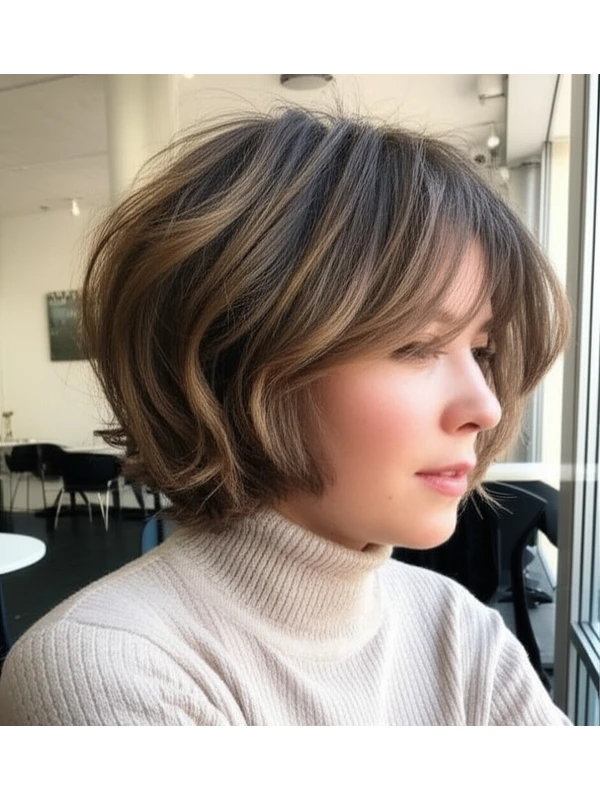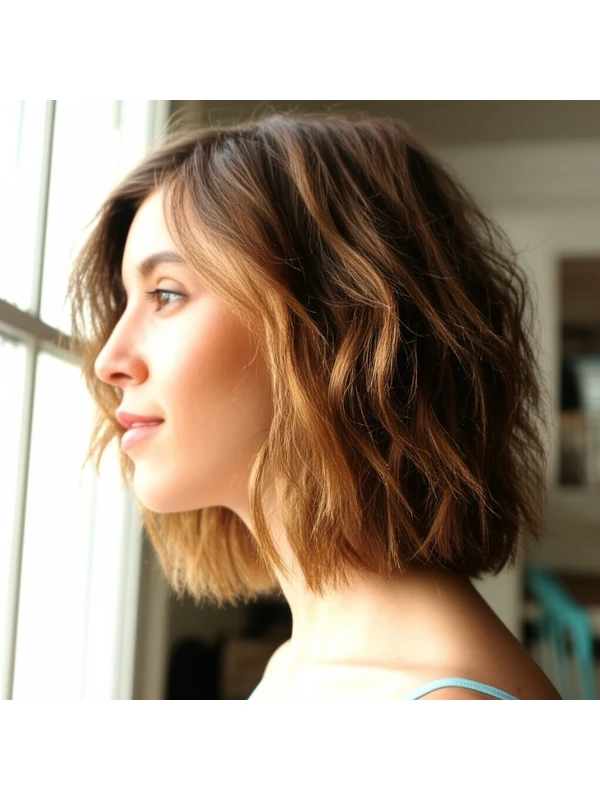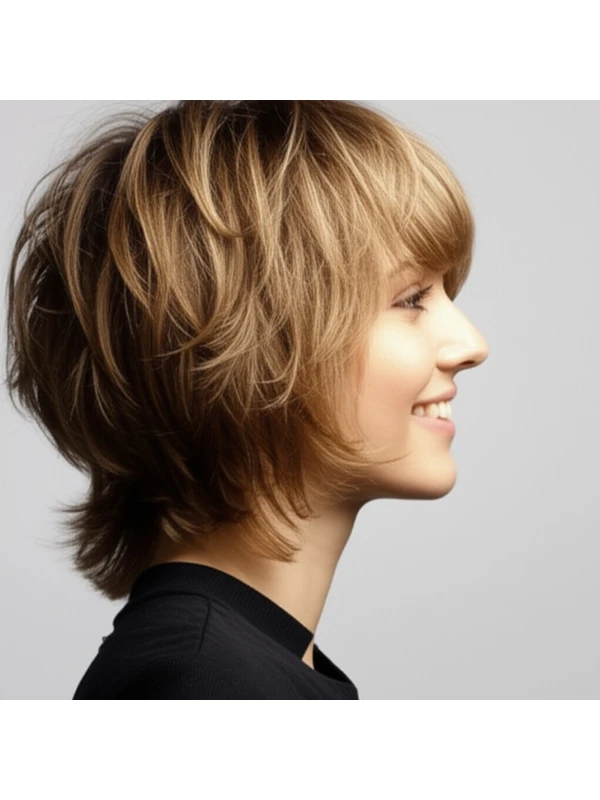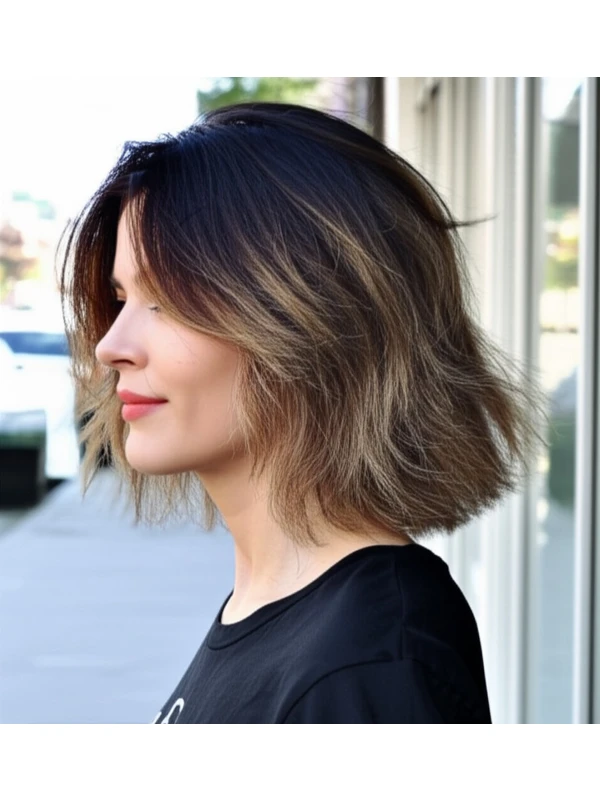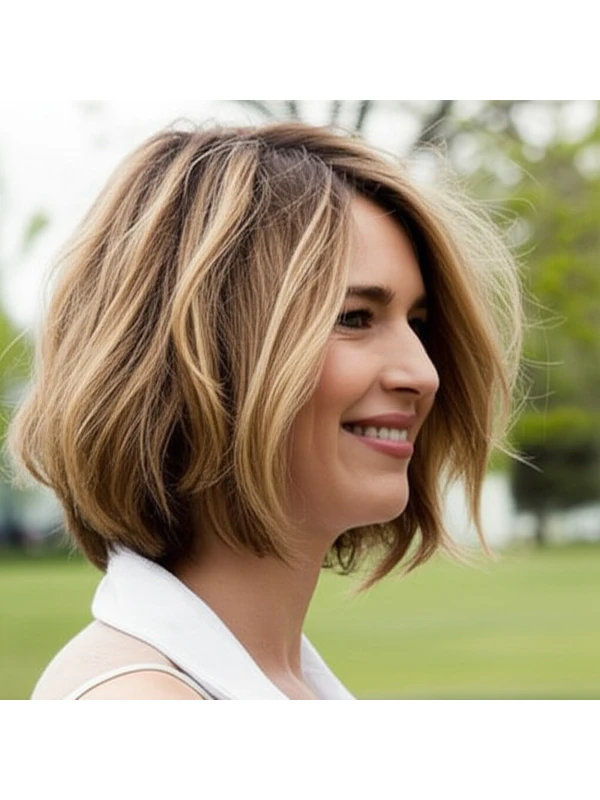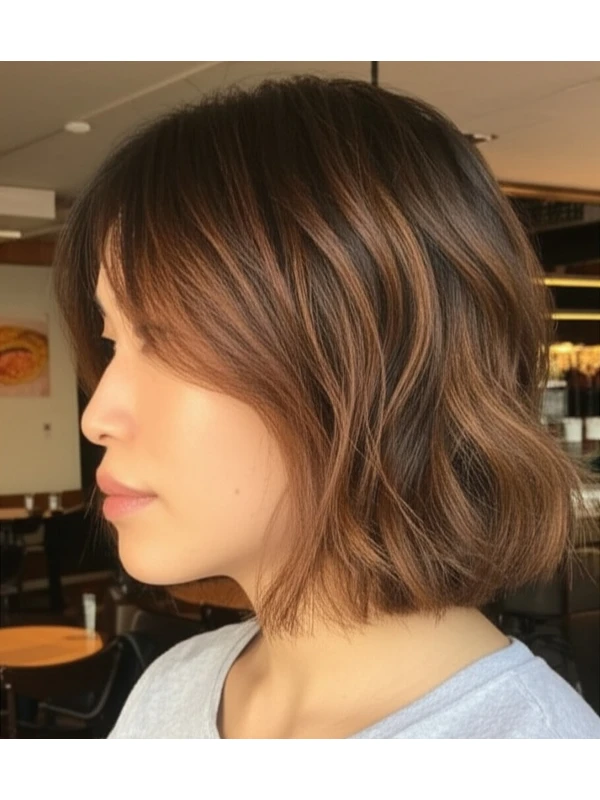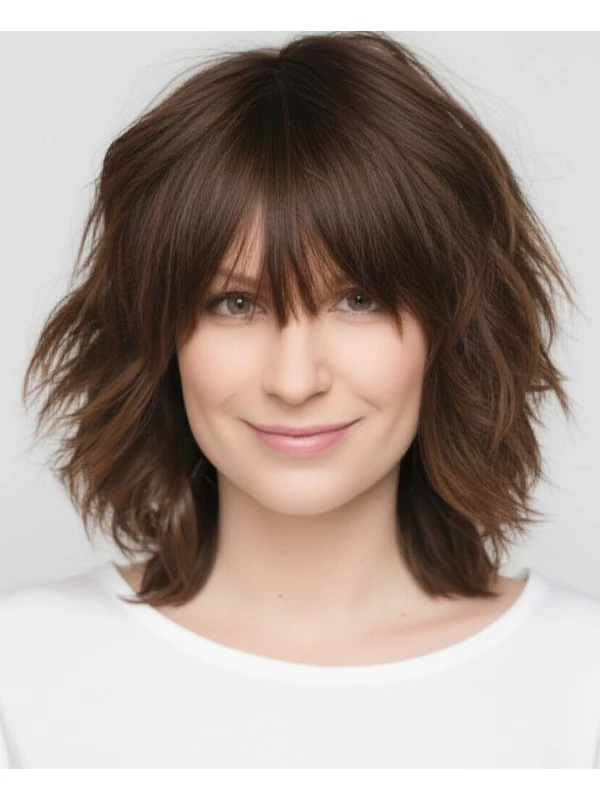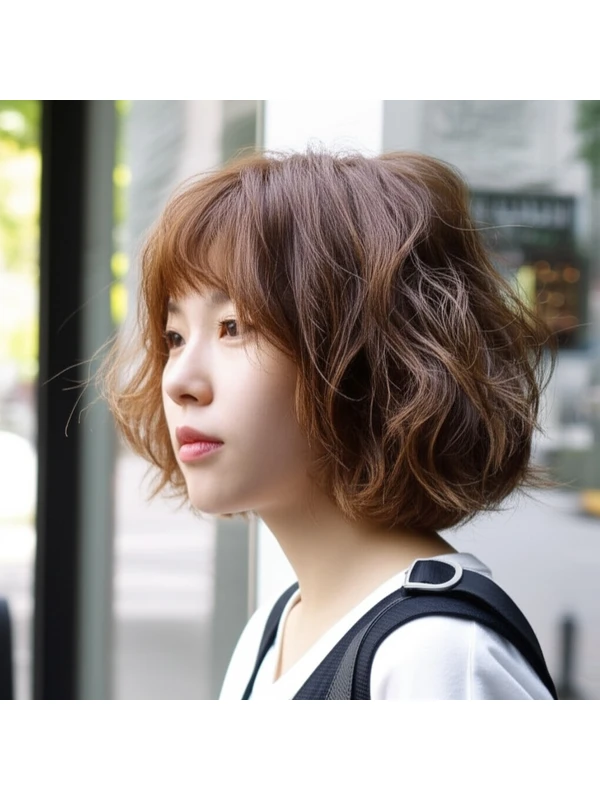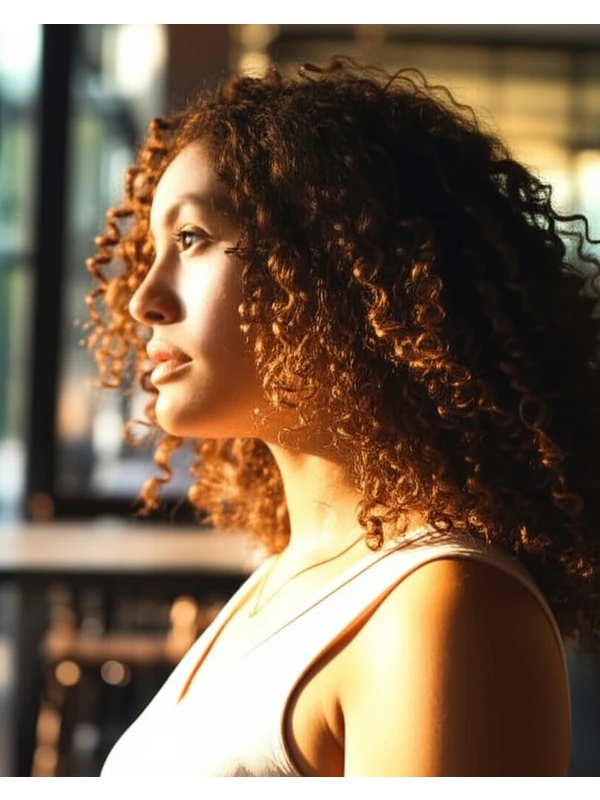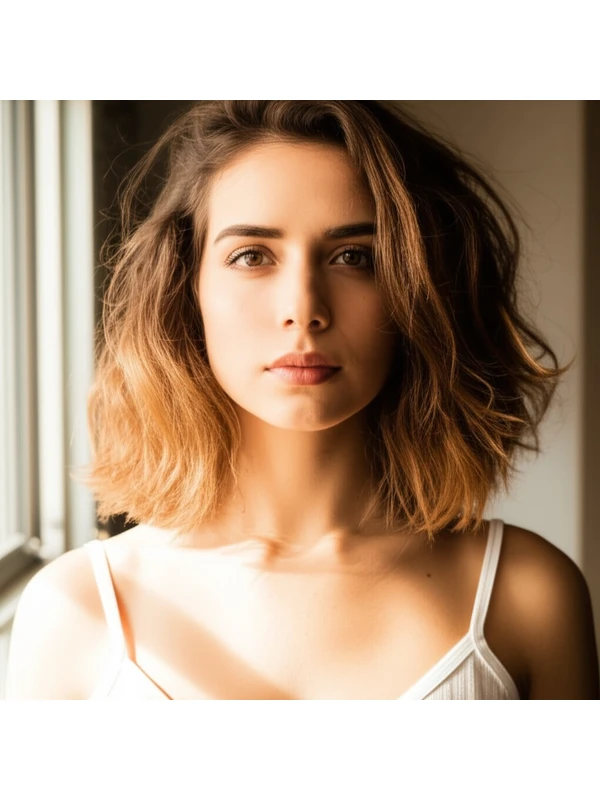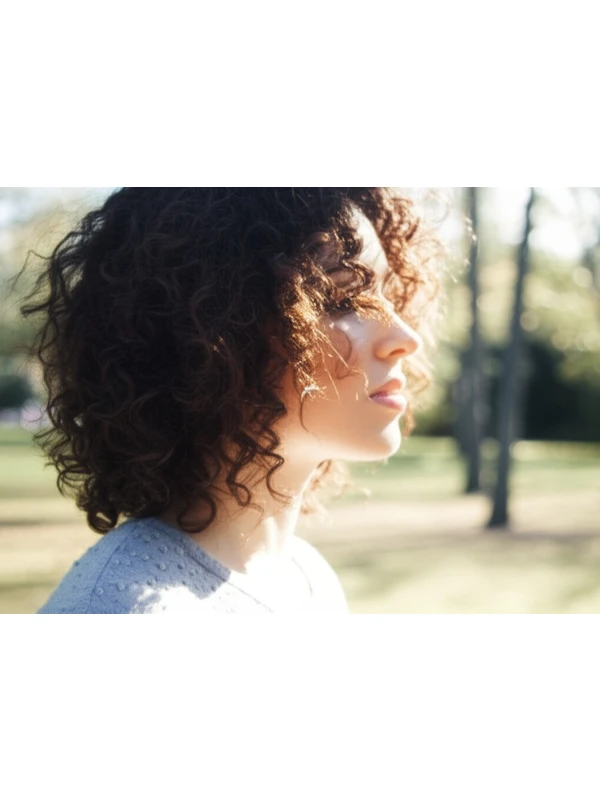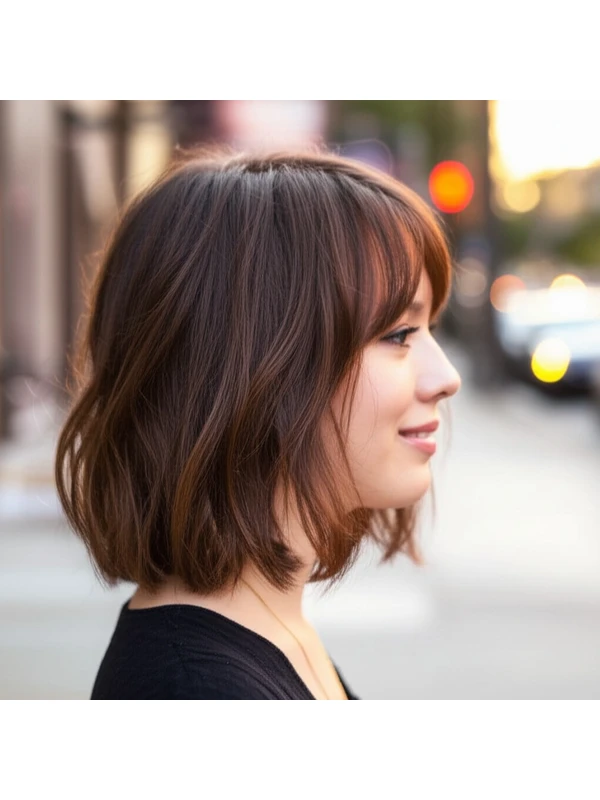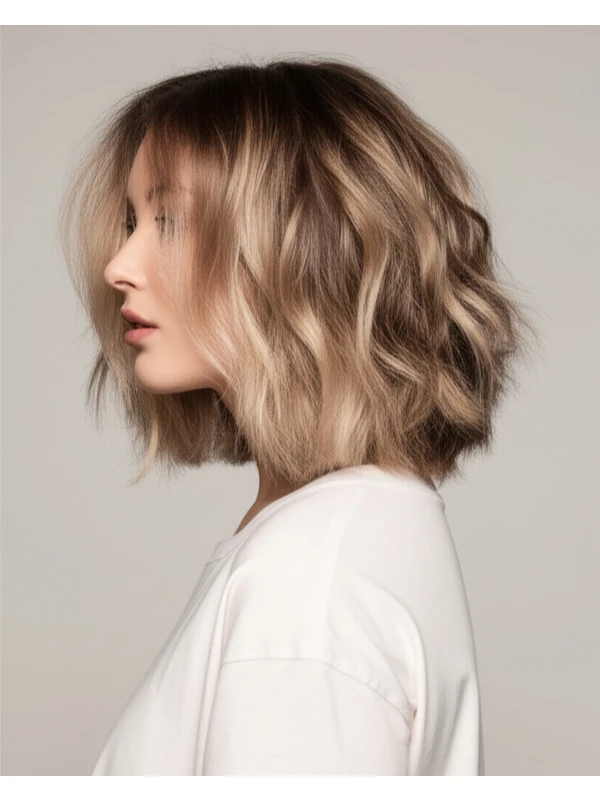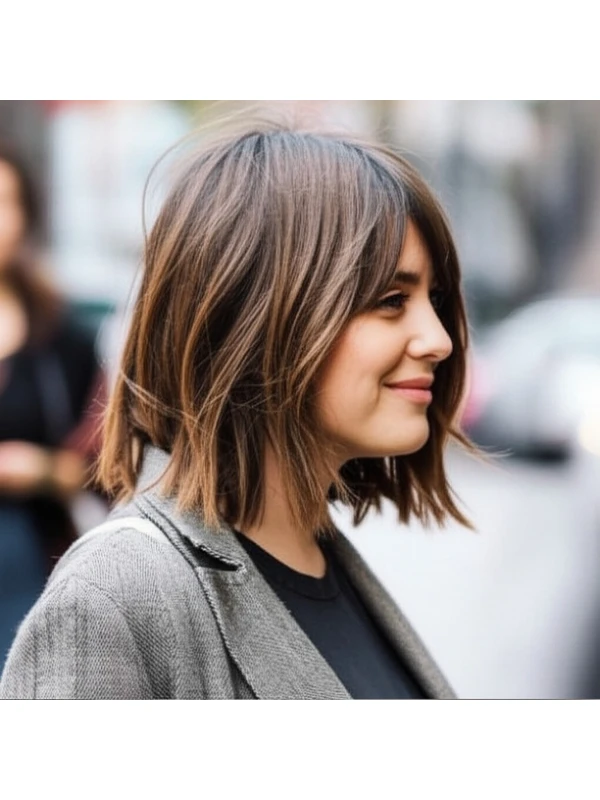#Feathered Layers: A Guide to Effortless Style
The feathered layer haircut is back – and it's more versatile than ever! This classic style offers movement, softness, and a flattering frame for almost any face shape and hair type. But what exactly is a feathered cut? Let’s dive in.
#1) Background & Definition: What Are Feathered Layers?
The "feathered" look refers to soft, blended layers that gradually decrease in length, resembling the delicate edges of feathers. They're not blunt or choppy; instead, they create a gentle flow and movement around the face and throughout the hair.
- Cut Geometry: The key is subtle graduation – shorter pieces are strategically placed to blend seamlessly into longer sections. This creates visual interest without harsh lines.
- Key Features: Softness, movement, blended layers, framing around the face.
- Typical Length Ranges: Can be adapted for any length! From a chin-length bob with feathered ends to long hair with subtle face-framing layers and longer back layers, it’s incredibly adaptable.
- Alternative Names: Layered shag (though a shag is generally more textured), soft layered cut, graduated layers.
#2) Face Shape Fit: Finding Your Perfect Feathered Look
The beauty of feathered layers lies in their ability to flatter various face shapes. Here's how it works:
- Oval: Lucky you! Almost any variation of feathered layers will look amazing on an oval face shape. Play with fringe options (see below).
- Round: Soft, angled layers that start around the cheekbones can help elongate a round face. Avoid too much volume at the sides; focus on height and vertical lines. A side-swept fringe is particularly flattering.
- Square: Feathered layers soften strong angles. Layers starting below the jawline create a more flowing silhouette. A soft, textured fringe can also balance a square jawline.
- Heart: Chin-length or slightly longer feathered layers with face-framing pieces will add fullness to a narrower chin. Avoid too much volume at the crown. A wispy, side-swept bang works well.
- Diamond: Layers that soften the angles of the forehead and jawline are ideal. Face-framing layers can balance wider cheekbones. A blunt or slightly angled fringe can be very chic.
- Oblong (Long): Shorter feathered layers, especially around the face, will add width and make a long face appear more balanced. Avoid overly long lengths that accentuate length further. A full, textured fringe is an excellent choice to shorten the appearance of the face.
Fringe Options: The right fringe can completely transform a feathered look! Consider: * Side-Swept: Universally flattering and easy to style. * Wispy/Curtain: Softens features and adds dimension. * Blunt (short): A bolder choice, best for square or diamond face shapes.
#3) Body Proportions & Height Guidance: Tailoring the Cut to You
Your body type also plays a role in how feathered layers look!
- Petite: Shorter lengths and strategically placed volume around the crown can create the illusion of height. Avoid overly long, heavy layers that can overwhelm a smaller frame.
- Average Height: Most layered styles will work well; experiment with different lengths and volumes.
- Tall: Longer feathered layers maintain balance. Consider adding subtle face-framing pieces to soften tallness.
- Narrow Shoulders: Layers that add volume at the shoulders create a more balanced silhouette.
- Broad Shoulders: Avoid excessive volume around the shoulders, as it can accentuate width. Focus on vertical lines and layers that draw attention upwards.
- Short Neck: Shorter lengths and styles with height are best to elongate the neck. Avoid too much fullness at the jawline.
- Long Neck: Longer lengths work well; consider layering throughout for added visual interest and softness.
#4) Works Best With Hair Types & Densities: Finding Your Feathered Match
Feathered layers can be adapted for nearly every hair type, but adjustments are needed!
- Straight Hair: Layers will fall sleekly and showcase the cut's geometry beautifully.
- Wavy Hair: Layers enhance natural waves, adding definition and bounce. Consider a slightly more blended approach to avoid excessive bulk.
- Curly/Coily Hair: Feathered layers can add shape and movement, but it’s crucial to account for shrinkage! (See below). Ask your stylist about "visual length" rather than actual length.
- Fine Hair: Layers create the illusion of volume, but avoid too many short layers which can make hair look thinner. Focus on face-framing and subtle layering.
- Medium Hair: This is a sweet spot! Most feathered layer styles will work well.
- Thick Hair: Layering removes bulk and adds movement. Multiple layers may be needed to achieve the desired lightness.
Shrinkage Considerations (Curly/Coily): Curls and coils can shrink significantly as they dry. A stylist experienced with textured hair is essential! What appears to be a long layer when wet will look much shorter when dry. Discuss your desired length after shrinkage.
#5) Styling Variations: From Casual Cool to Evening Glam
The beauty of feathered layers lies in their versatility.
- Sleek vs Textured: Sleek styles use smoothing products and minimal heat, while textured styles embrace natural movement with texturizing sprays or sea salt sprays.
- Middle vs Side Part: A middle part creates symmetry; a side part adds softness and asymmetry.
- Fringe Variations: A blunt fringe looks bold, a wispy fringe is soft, and no fringe at all shows off the layers.
- Occasion Styling:
- Casual: Air-dried with a touch of texturizing spray.
- Office: Sleeked down with a smoothing serum and styled away from the face.
- Evening: Curled or waved using hot tools for added drama.
#6) Maintenance: Keeping Your Layers Looking Fresh
- Trim Cadence: Every 6-8 weeks, depending on how quickly your hair grows and how defined you want to keep the layers.
- At-Home Routine: Gentle shampooing (2-3 times a week), moisturizing conditioner, weekly deep conditioning treatment.
- Heat vs Air Dry: Air drying is gentler; heat styling creates more definition but requires extra protection.
- Product Checklist:
- Shampoo & Conditioner: Hydrating formulas for your hair type.
- Leave-In Conditioner: For moisture and detangling.
- Heat Protectant (if using hot tools).
- Styling Cream/Mousse: To enhance texture and hold.
- Finishing Serum/Oil: To smooth frizz and add shine.
- Estimated Daily Styling Time: 5-15 minutes, depending on the desired style.
#7) Grow-Out Roadmap: The Evolution of Your Layers
- Months 1-3: The layers are most defined and noticeable. Maintaining shape with regular trims is key.
- Months 4-6: Layers begin to blend together as hair grows out. This can be a good time to adjust the style, perhaps adding more face-framing pieces or softening the overall look.
- Maintaining Shape: Ask your stylist for dust-offs (very light trims) between full cuts to maintain length and shape.
#8) Color Pairings: Enhancing Your Feathered Layers
Color can dramatically enhance feathered layers!
- Cool Undertones: Ashy blondes, cool browns, silver highlights.
- Warm Undertones: Honey blondes, caramel browns, copper tones.
- Low-Commitment Options: Balayage or babylights add dimension without harsh lines and grow out seamlessly. Root smudging can soften the contrast between your natural color and highlighted sections.
#9) Season & Occasion Guide: Styling for Every Moment
- Spring/Summer: Lighter, airier styling with beachy waves or a soft, side-swept fringe.
- Fall/Winter: Add warmth with richer tones and more structured styles. Consider curling the ends inwards for a vintage vibe.
- Work: Sleek and polished styles are best.
- Weddings: Romantic, flowing waves or an updo that showcases the layers.
- Parties: Embrace texture and volume!
#10) Cost & Time: Salon Expectations
- Salon Time: Typically 45-90 minutes for a layered cut. More complex styles with fringe or color will take longer.
- Price Range: Expect to pay slightly more than a standard haircut, but less than a highly specialized style.
#11) Pros & Cons: The Trade-Offs
Pros: Flattering on most face shapes and hair types, versatile styling options, creates movement and volume, classic and timeless look. Cons: Requires regular trims to maintain shape, can be more challenging to style than a one-length cut (though many find it worth the effort!), potential for looking "dated" if not styled thoughtfully.
#12) Salon Consultation Script: Your Questions Answered
Here are some questions you can bring up during your consultation with your stylist:
- “I’m interested in feathered layers. Can you show me examples of this style on someone with my face shape and hair type?”
- "What length would be most flattering for my face?"
- "How many layers will I need to achieve the desired volume/shape?"
- "Can we incorporate a fringe? What kind of fringe would work best with my features?"
- “How much time should I realistically expect to spend styling this cut each day?”
- "What products do you recommend for maintaining the shape and health of my hair after the cut?"
FAQs:
- Will feathered layers make my hair look thin? Not necessarily! Strategically placed layers can actually create volume, but it’s important to avoid too many short layers if your hair is very fine.
- Can I get feathered layers with a bob? Absolutely! A layered bob (or "feathered bob") is a popular and chic look.
- Are feathered layers suitable for all ages? Yes! The style can be adapted to suit any age group – just adjust the length and layering accordingly.
- Do I need to use hot tools to style feathered layers? No, but heat styling can enhance the shape and movement. Air drying is a perfectly acceptable option.
- How do I prevent my feathered layers from looking "choppy"? Ask your stylist for very soft blending between layers.
- Can I DIY feathered layers at home? While possible for experienced stylists, it’s best left to the professionals to ensure a balanced and flattering result.
